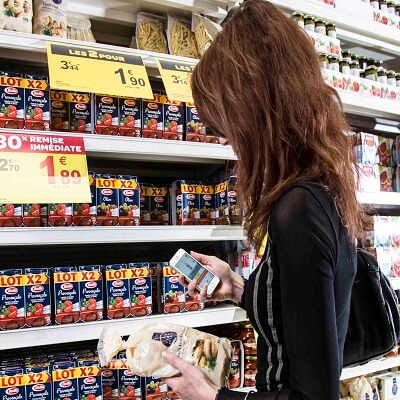
IPS or Indoor Positioning System is a technology that is used to locate certain objects or persons inside a building using light as a data transmission medium.
We all know how difficult it is to find some product in an unfamiliar hypermarket! We have to ask the staff there to help us out. Now imagine finding what you are looking for by navigating your way through the aisles by following directions on your mobile phone. Doesn’t it sound similar to GPS? Yes, it is somewhat like that except that this technology is called Indoor Positioning System (IPS), which uses visible light communication (VLC) through LEDs instead of satellites to get signals. This can be referred to as GPS for indoor environment. It has an advantage over GPS because it can work flawlessly in an indoor environment and can also offer options for localisation as indoor settings are highly customised to suit the requirements of a particular store, hospital, school, tourism, indoor parking lot etc.
IPS is a method where LEDs are used to transmit data using visible light as a medium, the same way WiFi transmits data with radio and microwave frequency spectrum. It works by using either of the two mediums – Bluetooth and WiFi hotspots. This is an application of IoT lighting, in which a light can directly communicate with a mobile device. In order to make it work, an LED light bulb is either fitted with a Bluetooth beacon or uses WiFi access points to locate mobile devices or provide some context of location or environment to these devices.
How it works?
The whole process can be divided into some simple steps. Taking an example of a retail store, firstly, LED lights fitted in the store act as beacons for connecting to the client’s/visitor’s mobile device. The visitors once connected can access the retailer’s shopping application to avail the benefits, ongoing offers and also get directions to the products they are looking for. The store can also promote its new products via this application and give tailor-made suggestions to their loyal customers based on their past preferences and purchases.
Apart from retail, there are several other applications of IPS. It has the ability to accurately identify the location of a car in a huge parking area, whether outside or inside the basement parking of a mall. It is also extremely useful for charting out detailed evacuation plans in case of emergencies and can help save lives of people. Such services can be especially useful for buildings like hospitals, schools, offices etc. and can be very useful for mapping out building interiors. For example, it can serve as a great tool to locate a particular boarding gate inside a mega airport or find a room number inside hospital premises.
Why choose IPS?
Apart from offering exceptional business prospects, the innovative approach has several other advantages. There is no need for infrastructural changes as IPS can operate within the existing lighting infrastructure rather than requiring additional equipment such as stand-alone beacons, thus maximising benefits out of LEDs. It can be placed anywhere and reaches every person with a mobile device inside the building and helps in measuring small distances accurately.
How VLC tackles spectrum shortage?
As there is a multifold increase in the usage of data due to heavy proliferation of mobile phones and other wireless devices, VLC can be used to tackle the issue of spectrum shortage. This system is also becoming increasingly popular as visible light spectrum doesn’t come under any spectrum regulations. It doesn’t interfere with WiFi or RF networks, making it a tool of choice for such communications. It makes use of spectrum between 400 THz and 800 THz, and since regular lights are used in this, there is no harm to the human eye apart from providing congestion-free transmission. Due to all these positive factors, VLC technology is emerging as an innovative means of transmitting data and its future seems very bright.
Some Applications of IPS
Augmented Reality, School Mapping, Guided Tours in Museums, Shopping Malls, Hypermarkets, Store Navigation, Factories, Airports, Railway Stations, Parking Lots, Targeted Advertising, Hospitals, Hotels, Sport Stadiums, Tourism